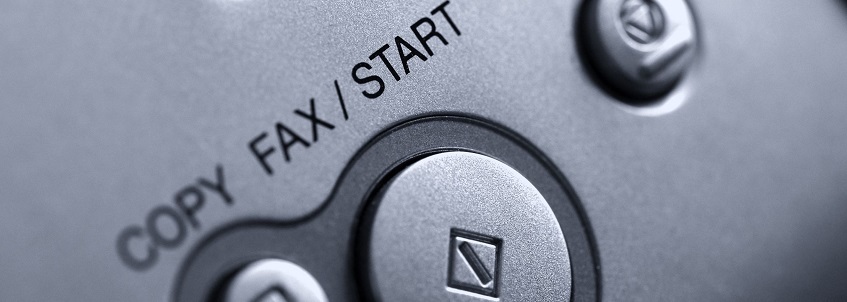

Copiers and printers: How do wireless printers and fax machines work?
Nightmares of office workers are usually full of wires. A cable for this, a cable for that, a table too far, a printer to high, an obsolete cable standard... there are thousands of ways for cables, or the lack thereof, to ruin a business day or an incredibly important mission. And that’s not even mentioning the costs and difficulties in installing a wired network in an office, not only in terms of physical installation, but also in terms of software setup. If big companies can afford to hire network technicians, there is just no choice for small businesses: wireless devices are welcomed as a godsend.
Wireless printers, wireless copiers, wireless faxes, or even wireless multifunction printers which put all these functions into one single machine can technically be freed from wires in many wireless ways.
What are these ways? How do these wireless machines work? What benefits do they bring, and how much can they cost?
Wireless printers and copiers
Wireless printers and copiers are now widely available in a variety of formats, using several different technologies. They bring a lot of concrete benefits for everyday use and more challenging duties, and their prices keep decreasing.
How wireless printers and copiers work
Several technologies can be used to make a copier, printer, or a combination of both – like a multifunction printer – work wirelessly:
- Wifi connections are the most straightforward solution. If the device supports Wifi connections, it’s natively a wireless printer. This type of connection works through the Wifi router to which both the printer and computer are connected: this router acts as a gateway. Some setting up may be required, so it’s important to check whether the printer is supplied with dedicated software making this setting up easy.
- Another option is to connect the printer to the Wifi router with a network cable like an Ethernet cable, if the printer and router are equipped with such connectivity. As the computer is connected wirelessly to the router, and the printer physically connected to the same router, wireless communications between the printer and router are possible. The setup is usually even easier than with a Wifi printer.
- Wifi direct is a relatively new technology supported by more and more wireless printers and copiers, allowing direct connection between the printer or copier and the computer, which is really helpful when there is an internet outage (normal Wifi connections are interrupted in such a scenario).
- Bluetooth connections are another type of connection for wireless printers. It’s mostly used to connect printers with small devices like laptop computers, smartphones or even digital cameras. The drawback is that the range is rather smaller than with Wifi (about 15 metres compared with over 100 metres for Wifi).
- NFC printing uses Near Field Communications: it’s basically the same technology that is used for contactless payments. Supported devices just need to be tapped onto the printer, or steadily held a few inches away from the receiver so as to send files which need to be printed. This connectivity is almost always used to transfer photos from a smartphone to a printer.
- Cloud printing is an innovative solution. Supported printers connected to the internet can be sent print jobs from online servers, where documents bound to be printed have been uploaded by the user. This effectively makes printing possible from anywhere.
- Older wireless printers relied on infrared connections to connect with computers wirelessly. This technology requires computers to be put very close to the printer, with nothing in between them blocking the signal.
- If the printer only has a USB connection, it can still be turned into a wireless printer. For PC users, the device required is called a print server. It’s a small device with a chip and two cable sockets: one USB cable to connect to the printer, one Ethernet cable to connect to the wireless router. Extensive setting up is usually required. It’s much easier for Mac users who can use an “Apple airport”, which is designed to do just that.
Typically, the best wireless printers and scanners will support not just one, but many of the above connections, the typical combination being Wifi + Bluetooth so that the printer can be connected with computers and mobile devices.
Advantages of wireless printers and copiers
Once they’re set up properly and working, wireless printers offer a great deal of benefits:
- The first benefit is that any wireless connection allows the wireless printer to be shared between several users, rather than being only accessible to the computer which is physically connected to it. This is a must-have feature if the printer is supposed to be used in an office environment.
- Also, this wireless networking, by definition, does not require the installation of a wired network in the office, which is an incredibly heavy and complex job.
- Another appreciable benefit is that it makes the office mobile. Users can move around with their phones, put their laptops on different desks, put the printer wherever they want... Printing will still be possible. This is an incredible advantage over traditional offices where everything has to stay at the same place because all workstations, printers and scanners are physically connected.
- Finally, wireless printers do not become obsolete. There is no reason to believe that it won’t be possible to still use them 10 or 20 years later, contrary to wired models subjected to ever evolving connectivity standards (try using a printer with a parallel port on a modern computer...).
Prices of wireless printers and copiers
Prices of wireless copiers and printers have come down significantly since the introduction of multifunction printers:
- It’s now possible to find colour inkjet wireless printers supporting both Wifi and Bluetooth connections for less than £30.
- Black-and-white laser printers supporting Wifi start at under £65, with colour models being twice as expensive.
- Some multifunction printers push the price of a cheap, inkjet wireless copier down to less than £60.
- Laser wireless copiers start at under £140 when monochrome, and when they support colour printing, just under £200.
So yes, it only costs less than £200 now to access the league of the best wireless copiers.

Wireless fax machines
For many business users, faxes have not yet been written off. And sending and receiving faxes wirelessly can be more than a luxury, but a real business need in some cases. Fortunately, there are a few solutions available to do just that.
How wireless faxes work
There are several ways to send or receive faxes wirelessly:
- Although extremely rare, totally wireless fax machines do exist: they can send and receive faxes over cellular networks. Some of these machines can even be battery powered. But such machines, also known as “GSM faxes”, are very hard to find really.
- An analogue to GSM gateway can be used to convert faxes sent from a traditional fax machine and transmit them through GSM, cellular networks wirelessly.
- Another solution involving an adapter is to use a “wireless phone jack”, with the one end plugged into the phone socket and another end, called “extension unit”, plugged into the traditional fax machine. One receiver can be connected wirelessly with many different devices using different “extension units”.
- It also may be possible to send faxes from a multifunction printer with fax functionality over Wifi to the router. But as faxes are not supposed to travel over the internet and VOIP connections, results are unpredictable, although some internet services providers are better at it than others.
- The best way to send faxes wirelessly is in fact not a hardware but a software solution. Many telecoms services providers have web applications which can convert uploaded documents to faxes and have them delivered to the desired recipients, usually by e-mail. Users therefore just have to scan the document they want to send with their wirelessly connected multifunction scanner and send it to the internet fax service while connected on Wifi to the web.
Advantages of wireless faxes
Advantages of wireless faxes are, basically, that faxes can be sent or received wirelessly.
This tautology has several very interesting consequences in terms of benefits:
- In terms of space, a wireless office is really a blessing, completely changing the way people work.
- In the case of GSM faxes, the fax machine is not only wireless: it is totally mobile, and faxes can be sent and received anywhere.
- In the case of internet faxes, the advantage is being able to send and receive faxes without having to buy any kind of extra hardware.
- Also, these last two solutions make it completely unnecessary to pay for a landline which would be used solely for the purpose of sending and receiving faxes, which represents huge savings in 2019.
Prices of wireless fax machine solutions
The various solutions presented above for sending and receiving faxes wirelessly may come at very different prices:
- GSM faxes, when they can be found, cost over £250,
- Analogue to GSM gateways can cost less than £50,
- Wireless phone jacks also cost under £50,
- Internet fax services comes in many plans, and the cost can be anywhere between £1 and £2 per page. Power users may opt for plans including 100 to 500 pages per month, which can cost anywhere between £5 and £30 per month.
More information on Copiers and Printers - What is a fax number? - How do I send a fax? - How does a wireless fax machine work? |
Discover the buying guide for Copiers and printers
-
Defining office photocopiers in 2025 – and choosing the right model

-
Getting the best from your multifunction printer

-
Top 5 portable photocopiers and printers in the UK in 2025

-
3D printers: for what types of business?

-
Finding the best small office printers in 2025

-
Choosing a fax machine in 2025

-
What to look for in a thermal printer

-
Wireless printing is now

-
Small printers for big productivity

-
Wireless printers coming of age

-
Doing it all with multifunction printer-copiers

-
3D printers in action


